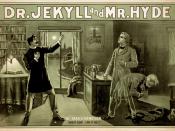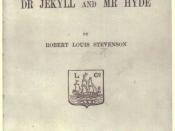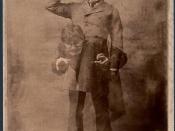The public self and the private self maintain a relatively stable balance in every man, woman, and child. This ubiquitous equilibrium scarcely arouses suspicion, nor does it stimulate conversation. Why should it? Balance has no cause to elicit a response. Do fire alarms alert us when no fire is present, just for the sake of our self-assurance? On the contrary, like many other situations that are regularly in a state of homeostasis, the balance of privacy and community (and actions committed therein) only receives attention when exceedingly out of alignment. Now, one must say to oneself, "That's all fine and good. But who sets the rules of equilibrium? Who decides alignment? Who says that fires are out of the ordinary, havoc and mayhem not standard?" Well, equilibrium does not necessarily imply serenity or the absence of peril. Only when tranquillity is the tried-and-true norm does it become the standard for balance.
In hell, fire is the norm. Equilibrium is only supplanted when a fire goes out. Maybe they have alarms for that.
Onward to addressing my problem of whom establishes balance for the rest of us. In the actual world, we learn through trial and error what is regular and what is fluke, to establish our own ideas of what is customary. In literature, for the reader to become oriented, they must search for clues as to the equilibrium of the setting. What is normal? What is out of the ordinary? In Robert Louis Stevenson's Dr. Jekyll and Mr. Hyde, the reactions of his characters provide the reader with a backdrop of that reality. When events start to go askew, we look to these characters to show us just how far askew. Utterson serves as a neutral facilitator to obtain for the reader this feedback. Stevenson first establishes these...



A good essay
A good essay
2 out of 2 people found this comment useful.